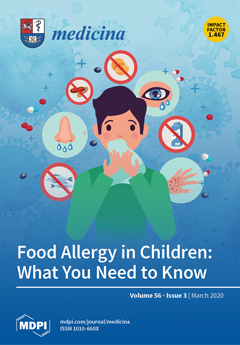Background and Objectives: One of the most frequent genetic alterations reported to date in prostate cancer (PC) is aberrant methylation of glutathione transferase P1 (
GSTP1). Taking into consideration the involvement of oxidative stress in PC pathogenesis and recent advances in scientific understanding of the role of
GSTP1*Ala114Val rs1138272 polymorphism in carcinogenesis, we hypothesized that this single-nucleotide polymorphism (SNP) influences the risk of PC independently of, or in combination with, other GST polymorphisms, including
GSTP1*IIe105Val rs1695 or
GSTM1 and
GSTT1 deletion polymorphisms.
Materials and Methods: Genotyping was performed in 237 PC cases and in 236 age-matched controls by multiplex polymerase chain reaction (PCR) for deletion of GST polymorphisms and by quantitative PCR for SNPs.
Results: We found that carriers of either
GSTP1*Val (rs1138272) or
GSTP1*Val (rs1695) variant alleles had a PC risk compared to individuals with both referent alleles (OR = 4.93, 95%CI: 2.89–8.40,
p < 0.001 and OR = 1.8, 95%CI: 1.19–2.73,
p = 0.006, respectively). Additionally, in a haplotype analysis we found that individuals with
GSTP1*C haplotype, represented by both variant alleles
(GSTP1*Val rs1695 + GSTP1*Val rs1138272), had a 5.46 times higher risk of PC development compared to individuals with the most frequent haplotype (95%CI = 2.56–11.65,
p < 0.001), suggesting a potential role of those variants in PC susceptibility. A regression analysis on the number of risk-associated alleles per individual (
GSTM1*active, GSTT1*null, GSTP1*Val rs1695 and
GSTP1*Val rs1138272) showed a significant increase in the risk of developing PC, from 3.65-fold in carriers of two risk alleles (95%CI = 1.55–8.61,
p = 0.003) to an approximately 12-fold increase in carriers of all four risk alleles (95%CI = 3.05–44.93,
p < 0.001).
Conclusion: Prostate cancer may be influenced by multiple glutathione transferase (GST) polymorphic genes, especially
GSTP1, highlighting the role of gene–gene interactions in human susceptibility to this cancer.
Full article






